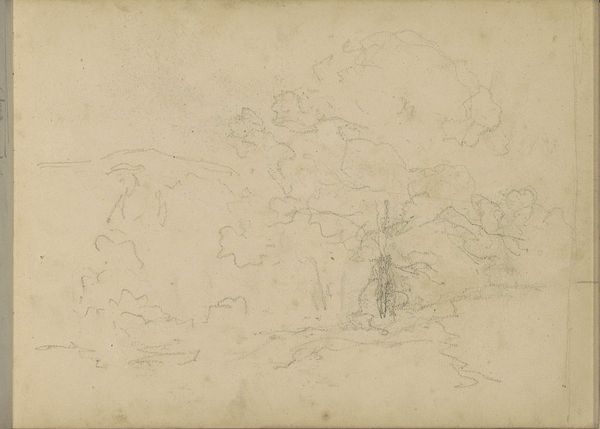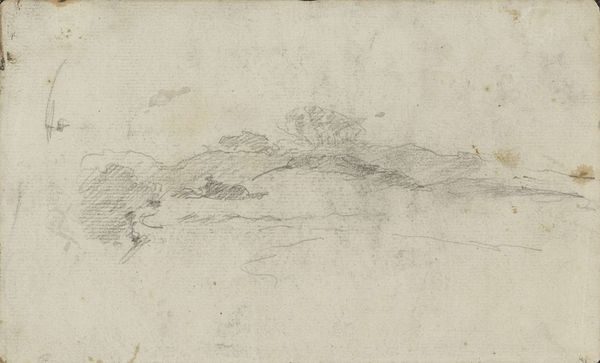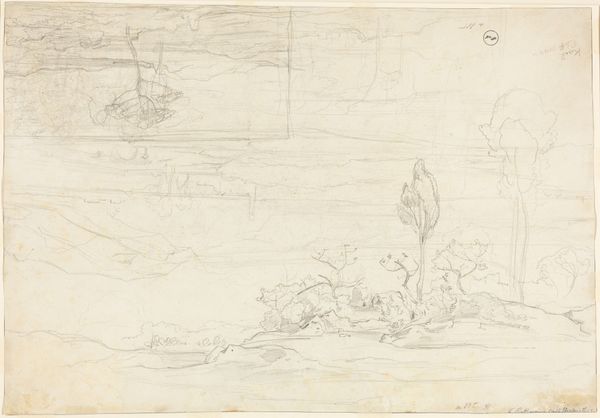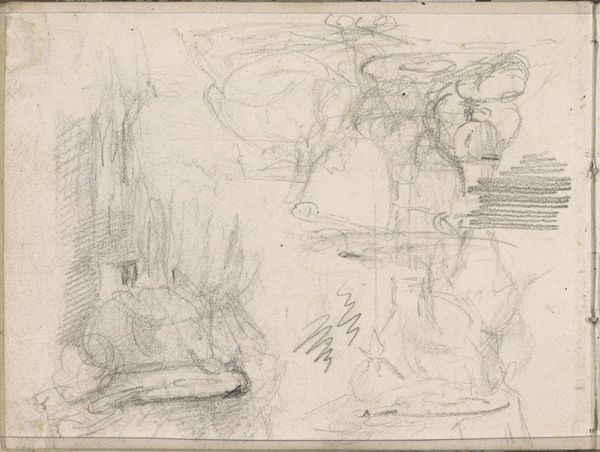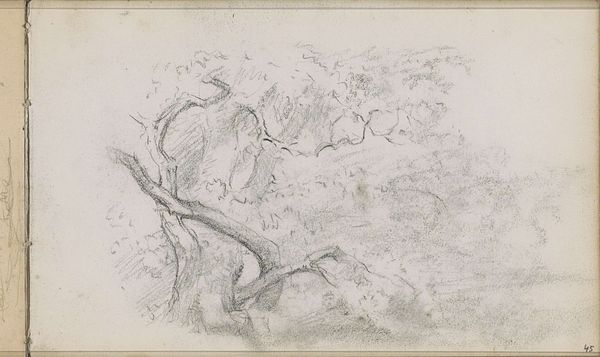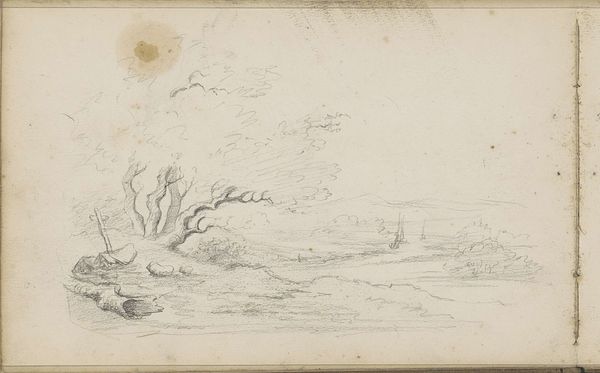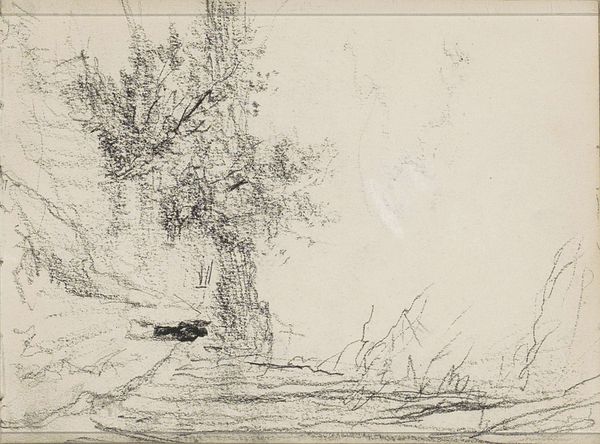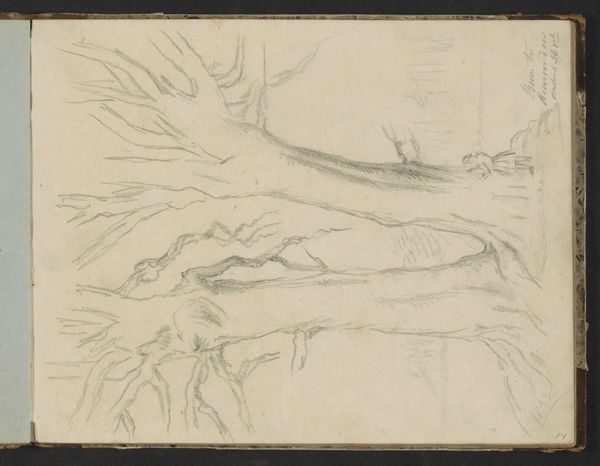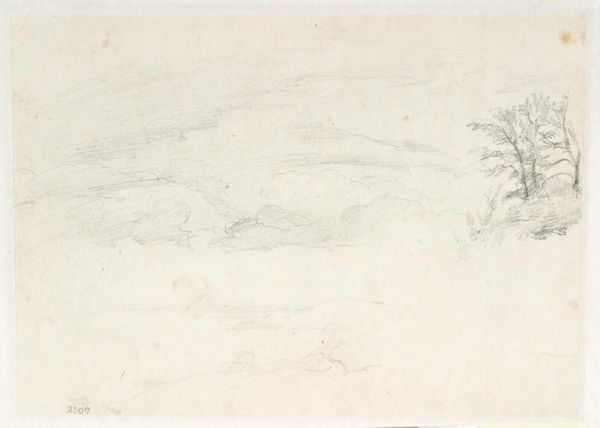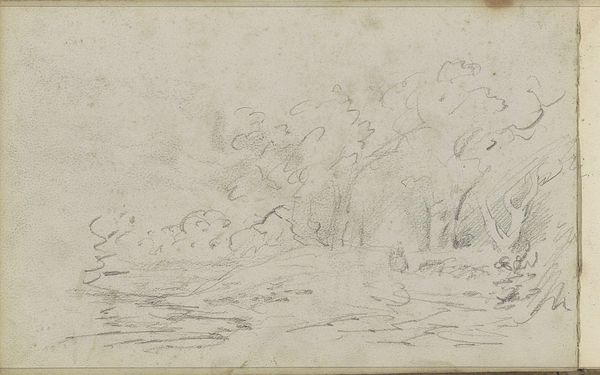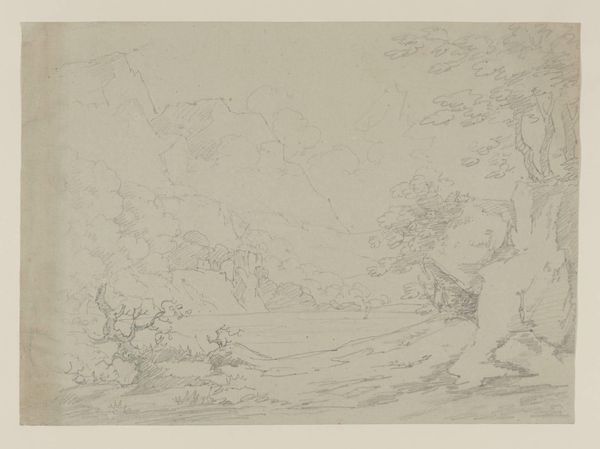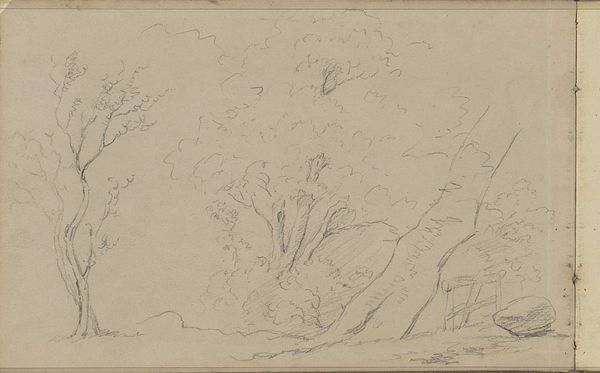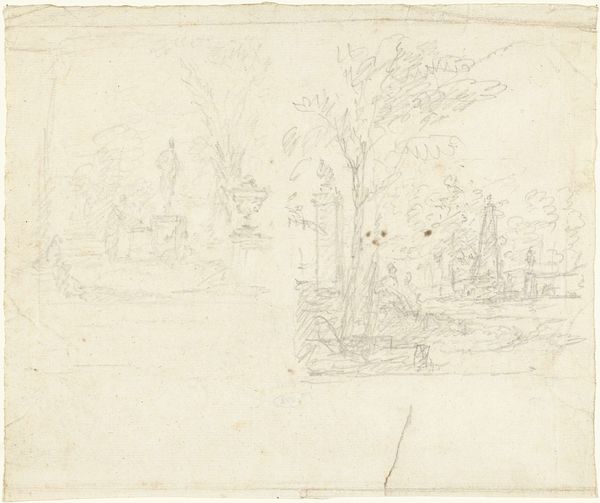
drawing, paper, pencil
#
drawing
#
pencil sketch
#
landscape
#
paper
#
pencil
#
realism
Dimensions: height 184 mm, width 282 mm
Copyright: Rijks Museum: Open Domain
Curator: This delicate pencil drawing, "Bomen langs een beek"—Trees Along a Stream—dates back to 1874 and is the work of Willem Cornelis Rip. What's your initial reaction to this study? Editor: Well, the immediate feeling is one of quiet observation. There's an almost casual air to the rendering, a real sense of being present with the artist as he captured this little slice of nature. Curator: Absolutely. Rip was working in a period increasingly interested in plein air sketching, part of a larger movement asserting the artist's individual experience of the natural world, which later would be connected to conservation and land management. The sketch itself exists within a tradition of valuing the authentic experience. Editor: And the marks themselves underscore that sense of immediacy. Look at the various densities of the pencil strokes. You can almost feel him pressing harder at some moments, lighter at others, responding directly to what he saw and felt. This material responsiveness is powerful. Was Rip concerned about the availability of such simple materials in the places he choose to record in sketches? Curator: Most likely. Though Rip came from a privileged background, the Realist movement had a particular aesthetic commitment to the humble realities of daily life. We also see a rise in artistic organizations around this time that created economies around these works, providing resources and advocacy for landscape painting, particularly among more specialized pencil and paper workshops. Editor: That emphasis is clear in the work. Even with such limited means, Rip achieves a convincing sense of depth and atmosphere. He creates form with what’s basically a readily accessible lump of graphite. The accessibility of those material informs what he can do, and how readily viewers respond to it, then and now. Curator: Indeed, there's an interesting interplay at play. On one hand, Rip emphasizes accessibility as a stylistic marker of truthfulness and integrity in his work, and as you noted, the simplicity helps shape that impression for us today. It asks a viewer to question whether art should have some type of grandeur. Editor: Thinking about those raw materials and Rip's skill... I walk away from this work more attuned to the often overlooked elegance and beauty found within seemingly common or easily attainable items. The art is in how they're transformed and elevated. Curator: And for me, considering the institutions and movements of this period sheds light on art's vital role in shaping our perspectives and even influencing social action in his own time. It prompts a greater examination into art as part of social commentary.
Comments
No comments
Be the first to comment and join the conversation on the ultimate creative platform.
